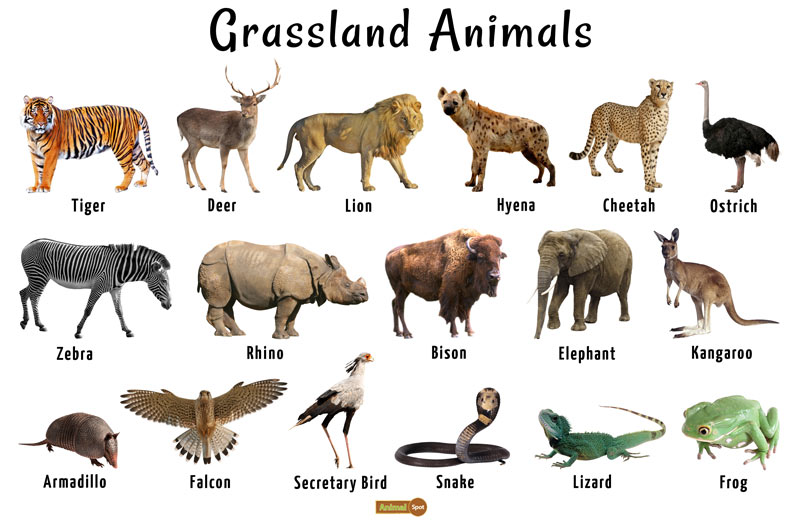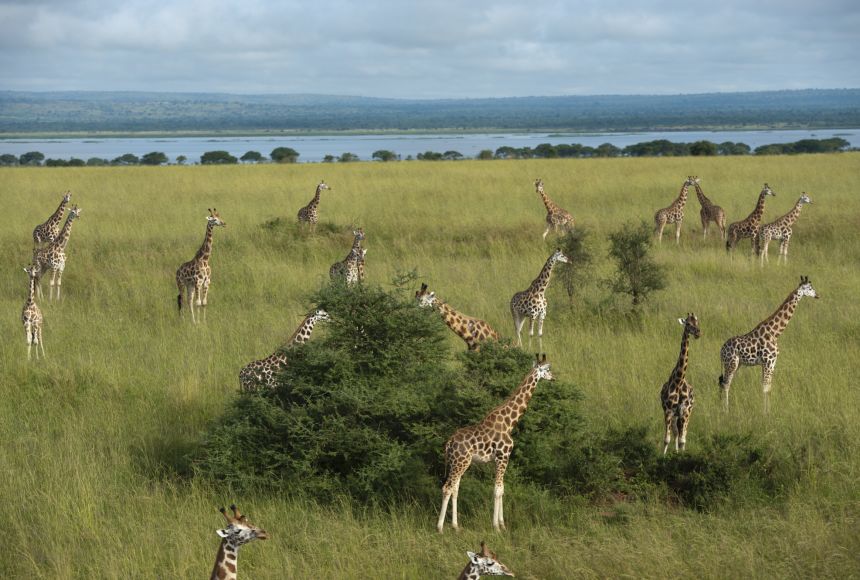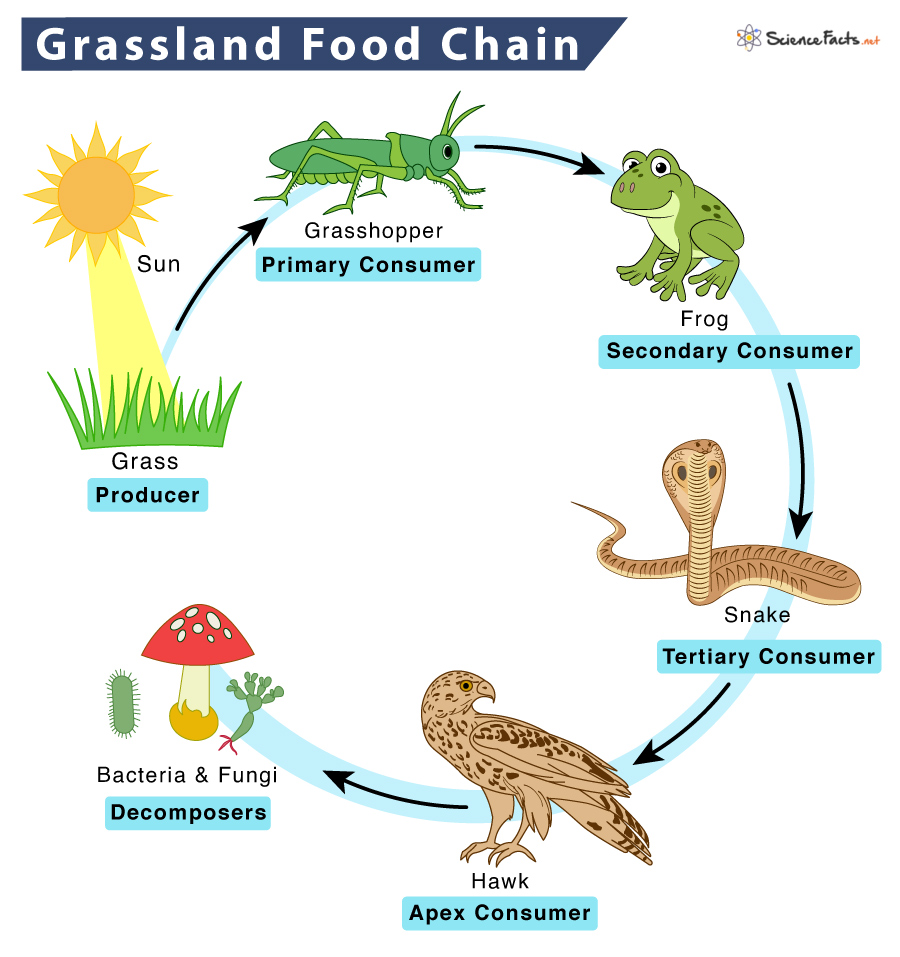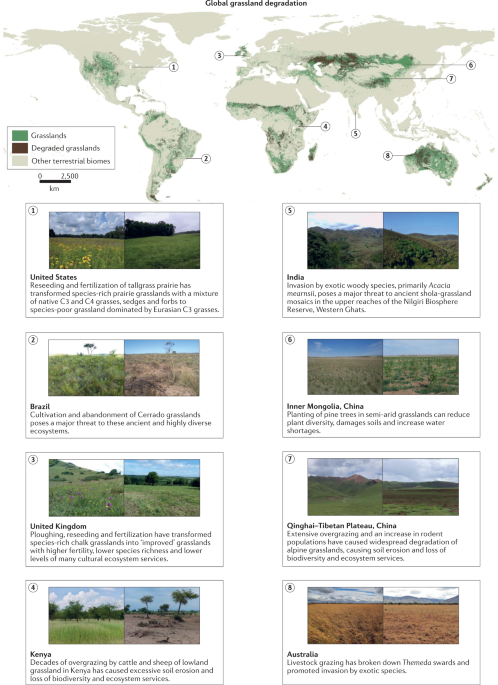Topic abiotic factors of an ecosystem: Explore the pivotal role of abiotic factors in ecosystems, where climate, soil, and water intricately shape the biodiversity and health of our planet.
Table of Content
- What are some examples of abiotic factors in an ecosystem?
- Understanding Abiotic Factors
- Key Abiotic Factors in Ecosystems
- Abiotic Factors and Biodiversity
- Climate and Weather Influences
- Soil Composition and Structure
- Water Sources and Quality
- YOUTUBE: Abiotic Factors in Ecosystems: Water
- Light Intensity and Photoperiod
- Impact of Altitude and Latitude
- Human Influences on Abiotic Factors
- Adaptation of Organisms to Abiotic Factors
What are some examples of abiotic factors in an ecosystem?
- Temperature: The average temperature of an ecosystem can have a significant impact on the organisms living within it. Extreme temperatures can limit the survival and reproduction of certain species.
- Light: The amount and intensity of light in an ecosystem can determine the types of plants that can grow and thrive. It also affects the behavior and activities of animals.
- Moisture: The availability of water in an ecosystem is crucial for the survival of organisms. It influences the distribution of plants and animals and affects their physiological processes.
- Soil composition: Different types of soil have varying nutrient content, water-holding capacity, and pH levels, which affect the growth of plants and their ability to support different species.
- Air or atmospheric conditions: Factors like wind speed, humidity, and air quality can impact the distribution and behavior of organisms. For example, high wind speeds can affect the flight patterns of birds or the dispersal of plant seeds.
- Topography: The physical features of the land, such as elevation, slope, and relief, can influence the microclimate and water drainage patterns of an ecosystem, shaping its biodiversity.
- Chemical balance: The presence and concentration of various chemicals, such as oxygen, carbon dioxide, and dissolved nutrients, play a vital role in the functioning and productivity of an ecosystem.
READ MORE:
Understanding Abiotic Factors
Abiotic factors are the non-living components of an ecosystem that significantly influence the environment and the organisms within it. These factors include elements like sunlight, temperature, wind, water, soil quality, and atmospheric gases. Understanding these factors is crucial as they determine the types of organisms that can thrive in an ecosystem and how they do so.
- Sunlight: Essential for photosynthesis, affecting plant growth and energy flow in the ecosystem.
- Temperature: Influences metabolic rates of organisms and determines the geographical distribution of species.
- Water: A critical resource for all living beings, affecting their survival and distribution.
- Soil Quality: Determines plant species composition, structure, and the overall productivity of an ecosystem.
- Atmospheric Gases: Oxygen, carbon dioxide, and nitrogen are vital for various biological processes.
These abiotic factors interact with biotic elements (living organisms) to shape the ecosystem"s structure, function, and dynamics. By influencing conditions such as humidity, soil pH, and nutrient availability, abiotic factors play a foundational role in the ecosystem, supporting life and enabling biodiversity.

Key Abiotic Factors in Ecosystems
Abiotic factors play a fundamental role in shaping ecosystems, influencing both the physical environment and the life it supports. These key elements include:
- Light: The primary energy source that drives photosynthesis, affecting plant growth and, consequently, the availability of resources for other organisms.
- Temperature: Governs the metabolic rates of organisms and affects seasonal and geographical species distribution.
- Water: Essential for all forms of life, water availability impacts species survival, reproduction, and habitat formation.
- Atmosphere: The composition of atmospheric gases, such as oxygen, carbon dioxide, and nitrogen, is critical for life processes like respiration and photosynthesis.
- Soil: Soil quality, including its composition, pH, and nutrient content, determines the types of plants that can grow, influencing the entire food web.
- Wind: Affects weather patterns, seed dispersal, and the physical shaping of habitats, influencing ecosystem dynamics.
- Salinity: The salt concentration in water can limit the types of organisms that live in aquatic environments and coastal areas.
- pH Levels: Acidic or alkaline conditions in both soil and water affect the availability of nutrients and the survival of species.
These abiotic factors interact in complex ways, determining the structure and function of ecosystems. By influencing the availability of resources, these non-living elements are crucial in defining the living conditions for all organisms within an ecosystem.
Abiotic Factors and Biodiversity
Abiotic factors are critical in shaping the biodiversity of ecosystems. These non-living components influence the distribution, abundance, and variety of life forms by creating conditions that can either support or limit the presence of different species. Understanding the interplay between abiotic factors and biodiversity reveals how ecosystems function and sustain life.
- Climate and Temperature: Different climates support diverse ecosystems, from tropical rainforests with high biodiversity to polar regions with specialized life forms. Temperature variations influence species" range and diversity.
- Water Availability: Water is essential for life, and its availability in an ecosystem can significantly affect the types of species that can survive there. Areas with abundant water support diverse plant and animal life, whereas deserts are home to species that have adapted to scarce water conditions.
- Soil Quality: Rich, nutrient-filled soil supports a wide variety of plant species, which in turn supports diverse animal populations. Poor soil conditions limit plant growth and, consequently, reduce biodiversity.
- Light Intensity: Sunlight is necessary for photosynthesis, and variations in light intensity can affect plant growth rates and types, which directly influences the animal species that can inhabit an area.
- Physical Geography: Geographic features such as mountains, rivers, and islands can create barriers or corridors that affect species distribution and evolution, leading to unique biodiversity in different regions.
By shaping the physical conditions of habitats, abiotic factors play a fundamental role in the evolution and distribution of biodiversity across the globe. The resilience and adaptability of ecosystems to changes in abiotic factors are key to sustaining biodiversity in the face of environmental changes.
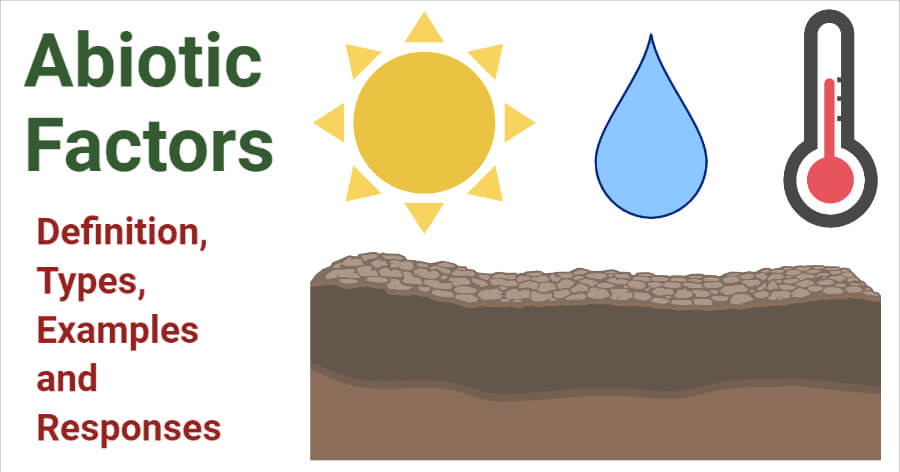
Climate and Weather Influences
The climate and weather play pivotal roles in shaping ecosystems through their influence on abiotic factors. These environmental conditions not only determine the survivability of habitats but also influence the distribution and behavior of organisms within an ecosystem.
- Temperature Fluctuations: Variations in temperature can define habitat types and influence the metabolic rates of organisms, affecting growth and reproduction rates.
- Precipitation Patterns: The amount and distribution of rainfall impact water availability, plant growth, and water-dependent habitats.
- Seasonal Changes: Seasonal variations affect the availability of resources, triggering migrations, hibernation, and breeding cycles in various species.
- Extreme Weather Events: Storms, floods, droughts, and wildfires can reshape ecosystems, affecting the distribution and abundance of species.
- Wind: Wind influences temperature and moisture distribution, affects pollination and seed dispersal, and can physically shape the landscape.
Understanding the effects of climate and weather on abiotic factors is essential for predicting changes in ecosystems and developing conservation strategies to protect biodiversity. These influences underscore the interconnectedness of climate, weather, and ecological systems.
Soil Composition and Structure
Soil is a critical abiotic factor in ecosystems, influencing the types of vegetation that can grow, which in turn supports various animal species. The composition and structure of soil determine its fertility, affecting ecosystem productivity and diversity.
- Soil Texture: Refers to the size of soil particles, which can range from coarse sand to fine clay. Texture influences water retention and air circulation, both vital for plant growth.
- Soil Composition: Made up of minerals, organic matter, water, and air, the composition affects soil fertility and its ability to support life.
- Soil pH: A measure of acidity or alkalinity, pH affects nutrient availability and the types of plants that can thrive.
- Soil Layers (Horizons): Different layers of soil have varying characteristics and roles, from the organic-rich topsoil to the mineral-heavy subsoil.
- Water Content: Availability of water in soil impacts the survival of plant species and, by extension, the animals that depend on them.
Understanding soil composition and structure is essential for conservation efforts, agriculture, and understanding ecosystem resilience. Healthy soil underpins biodiversity, supporting a wide range of plant and animal life by providing nutrients, water, and a medium for root systems.

Water Sources and Quality
Water is a fundamental abiotic factor in ecosystems, vital for the survival of all living organisms. The sources and quality of water in an ecosystem significantly influence its health and the diversity of life it supports.
- Freshwater Sources: Rivers, lakes, and streams provide habitats for a wide range of organisms. The flow rate, temperature, and oxygen levels in these waters are crucial for aquatic life.
- Groundwater: Acts as a vital source of water for vegetation in many ecosystems, influencing plant distribution and growth.
- Marine Environments: Oceans and seas are influenced by salinity levels, temperature, and depth, which determine the types of organisms that can thrive.
- Water Quality: Pollution from chemicals, waste, and runoff can severely impact ecosystems, reducing biodiversity and affecting the health of aquatic and terrestrial life.
- Rainfall Patterns: Precipitation affects soil moisture levels and water availability, shaping terrestrial and aquatic habitats.
The availability, distribution, and quality of water in an ecosystem play a critical role in determining the types of species that can survive and thrive. Protecting water sources from pollution and managing water use sustainably are crucial for the preservation of ecosystems.
Abiotic Factors in Ecosystems: Water
Dive into the mesmerizing world of water with this captivating video that showcases the beauty and importance of this life-giving resource. Explore stunning underwater vistas, discover fascinating marine life, and gain a deeper appreciation for the incredible power of water.
Abiotic Factors in Ecosystems: Soil and Minerals
Uncover the secrets hidden within soil and minerals as you embark on a journey through this enlightening video. From the rich biodiversity found beneath our feet to the astonishing variety of minerals that shape our planet, this captivating footage will leave you in awe of the remarkable world beneath the surface.
Light Intensity and Photoperiod
Light intensity and photoperiod are significant abiotic factors that influence ecosystems by affecting plant photosynthesis, growth patterns, and the behavior of animal species. The availability and duration of sunlight not only determine the types of vegetation that can thrive but also influence the reproductive cycles and migration patterns of various organisms.
- Light Intensity: The amount of sunlight received affects the rate of photosynthesis in plants, which in turn influences the energy available within an ecosystem. High light intensity supports abundant plant life, which supports a diverse array of animal species.
- Photoperiod: The length of day and night varies with seasons, affecting the biological rhythms of plants and animals. Changes in photoperiod trigger breeding, flowering, and migration events in various species.
- Seasonal Variations: Seasonal changes in light intensity and photoperiod can lead to dramatic shifts in ecosystem dynamics, such as the bloom of phytoplankton in oceans, which supports a wide range of marine life.
- Latitude: The latitude of an ecosystem affects the angle of the sun"s rays, which influences both light intensity and photoperiod. Polar regions experience extreme variations, while equatorial regions enjoy consistent daylight hours, affecting local biodiversity.
Understanding the effects of light intensity and photoperiod on ecosystems is crucial for predicting plant productivity, animal behavior, and the overall health of ecosystems. These factors play a key role in the distribution of species and the timing of ecological events.
Impact of Altitude and Latitude
The impact of altitude and latitude on ecosystems is profound, affecting climate, vegetation, and the types of species that can thrive. These abiotic factors shape the environment, influencing biodiversity and ecosystem dynamics.
- Altitude: Higher elevations experience cooler temperatures, reduced oxygen levels, and increased solar radiation. These conditions limit the types of plants and animals that can survive, often resulting in unique adaptations and biodiversity.
- Latitude: The distance from the equator affects climate and temperature, with tropical regions near the equator experiencing warmer temperatures and greater biodiversity. In contrast, polar regions have harsher climates and more specialized ecosystems.
- Climate Zones: Altitude and latitude together determine the climate zones, from tropical and temperate to polar, each supporting distinct ecosystems with unique abiotic and biotic components.
- Vegetation Zones: These factors also influence the distribution of vegetation zones, from lush rainforests at low altitudes and latitudes to tundra and alpine ecosystems at high elevations and latitudes.
- Species Adaptations: The adaptations of species to these conditions are remarkable, from thick fur and fat layers for insulation in polar animals to specialized root systems in high-altitude plants for better nutrient uptake.
Understanding the impact of altitude and latitude is crucial for conservation efforts, helping to predict changes in ecosystems with global climate change and protect the unique biodiversity found at different elevations and latitudes.
Human Influences on Abiotic Factors
Human activities significantly impact abiotic factors within ecosystems, affecting their structure, function, and the diversity of life they support. Understanding these influences is crucial for mitigating negative effects and promoting sustainable interactions with our environment.
- Pollution: Air, water, and soil pollution alter the chemical composition of ecosystems, affecting the health and distribution of species.
- Climate Change: Emissions of greenhouse gases from fossil fuel consumption are altering global climates, affecting temperature and precipitation patterns worldwide.
- Land Use Change: Deforestation, urbanization, and agriculture modify the physical landscape and habitats, leading to loss of biodiversity and alteration of ecosystem services.
- Water Diversion: The redirection of water for agriculture, industry, and urban use affects the availability of freshwater for ecosystems, altering habitats and species distributions.
- Soil Degradation: Overuse of fertilizers and pesticides, along with erosion, compacts soil and reduces its fertility, impacting plant growth and food webs.
- Introduction of Invasive Species: Human activities often introduce non-native species to ecosystems, which can outcompete native species and disrupt ecological balances.
Proactive measures, including pollution reduction, sustainable resource use, and conservation efforts, are essential to mitigate human impacts on abiotic factors and protect ecosystem health and biodiversity.

READ MORE:
Adaptation of Organisms to Abiotic Factors
Organisms have evolved a variety of adaptations to survive the challenges posed by abiotic factors in their ecosystems. These adaptations enable species to thrive under specific environmental conditions, showcasing the resilience and diversity of life.
- Thermal Adaptations: Species in extreme temperatures have developed insulating features, such as fur or feathers, and behavioral adaptations like burrowing or nocturnal activity to mitigate heat loss or gain.
- Water Conservation: Desert plants (xerophytes) and animals have adapted ways to minimize water loss, such as waxy plant surfaces, reduced leaf size, and efficient kidney functions in animals.
- Light Utilization: Plants in dense forests have adapted to capture limited sunlight through large leaves, while others may grow taller or develop thinner leaves to maximize light absorption.
- Soil Nutrient Utilization: Some plants have developed symbiotic relationships with bacteria and fungi to enhance nutrient uptake in poor soil conditions.
- Salinity Tolerance: Organisms in coastal and estuarine environments have evolved mechanisms to deal with varying salinity levels, such as specialized glands in animals and salt excretion processes in plants.
- Altitude and Pressure Adaptations: High-altitude animals and deep-sea organisms exhibit physiological changes, such as increased hemoglobin or pressure-resistant body structures, to survive in low-oxygen or high-pressure environments.
These adaptations are the result of millions of years of evolution, allowing organisms to exploit different niches and contribute to the biodiversity of their ecosystems. Understanding these adaptations helps us appreciate the complexity of life and the intricacies of ecological balance.
Exploring abiotic factors unveils the intricate web of life, emphasizing the importance of preserving our ecosystems for future generations. Understanding these elements can inspire sustainable living and a deeper connection with nature.

